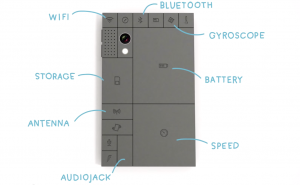
Your cell phone battery needs recharging twice a day. Your iPhone 4 won’t be updated to the latest OS. Your phones bugs for no reason. The volume rocker no longer rocks. The list of little niggles and inconveniences associated with that bright shiny wonder bought only a year or so ago continues to grow. Is it normal? Is it just the product life cycle? Or is it something else more shady and suspect? Is it ……planned obsolescence?
What is planned obsolescence?
Planned obsolescence is a policy that manufacturers use in order to shorten the useful life of a product, forcing customers to buy newer products. There are two types of planned obsolescence. First of all technological obsolescence which concentrates on reducing the useful life of a device by:
- Employing cheaper but less robust products
- Using irreparable products (no spare parts unavailable)
- Making the replacement parts very expensive dissuading purchase
- Having parts that are difficult to remove like unchangeable batteries
- Employing parts and connections that are not capable of adapting to changing norms and standards
According to a study by ADEME (2012), only 44% of electronic devices that break down are repairable. A good (or bad) example of is the iPhone, which has a fixed battery. In fact, the battery is one of the components that gets used the most, so not allowing customers to replace it themselves, makes the iPhone less attractive as it gets older. Moreover, by making some of the the iPhone 5 connections different from previous phones, users had to buy a new set of accessories as they were not backwardly compatible.
 The second type of obsolescence is psychological or aesthetic. By proposing cosmetic changes and marginal improvements in looks and features, manufacturers launch newer models way before their older models really need to be replaced. This is particularly the case for mobile phones since they are replaced on average every 20 months while their lifetime averages at least 4 years. What is true for hardware is equally true for software. Designed incompatibility between applications and OS abound in this sector and there is no going back if you are not happy with the latest version on your ‘outdated’ device. The newer and more expensive versions of software make Apple’s older products obsolete before the real end of their product cycle. With more than three versions of the iPad in 2 years and six versions of the iPhone in 5 years, newer versions of such devices are being multiplied and positioned as “sociocultural products.”
The second type of obsolescence is psychological or aesthetic. By proposing cosmetic changes and marginal improvements in looks and features, manufacturers launch newer models way before their older models really need to be replaced. This is particularly the case for mobile phones since they are replaced on average every 20 months while their lifetime averages at least 4 years. What is true for hardware is equally true for software. Designed incompatibility between applications and OS abound in this sector and there is no going back if you are not happy with the latest version on your ‘outdated’ device. The newer and more expensive versions of software make Apple’s older products obsolete before the real end of their product cycle. With more than three versions of the iPad in 2 years and six versions of the iPhone in 5 years, newer versions of such devices are being multiplied and positioned as “sociocultural products.”
What are the consequences of planned obsolescence on consumers and the environment?
For consumers, the consequences are financial. Pressure to buy newer products every year encourages unwise purchasing decisions, increasing debt and poor value for money. And the costs for the environment are high. For instance, we need 25 different ores to produce a Smartphone. Manufacturers are obliged to dig deeper in the earth to mine materials that are no longer available on the surface. For this reason, mineral extraction causes the destruction of a myriad of habitats, plains and forests. Nor are we capable of recovering more than a fraction of what we produce in industrial waste, especially in electric and electronic components (WEEE). All the same there is a growing awareness that the sector has to do more to recycle old phones and make sure that precious minerals are collected with more respect for the environment and for those who mine these materials.
How to fight against planned obsolescence?
There are a number of ways that planned obsolescence can be combated but consumers are not really able to do very much in an organised way. There are phones being produced that try to have an impact, like the the fair phone venture which will appeal to environmentalists but the real culprits are the major manufactures who will do almost anything to maintain or increase their market share. Legislation, like extending legal warranties and outlawing certain amoral practices may have a temporary local effect but in a rapidly changing market where competition is pushing down prices, any significant change is unlikely. So can we come up with a more radical solution to planned obsolescence?
A Smartphone with removable interchangeable spare parts?
 At first site the Dave Hakkes’s project seemed to be a little far fetched, a renewable mobile phone. How could that be possible? The Dutch designer wished to create a new smart phone composed of removable parts as if it were like a Lego construction, (not unsurprising for a Dane!) So, the Bluetooth, GPS, camera, battery and all the other mobile phone components could be replaced at any time. In the inventor’s own words:
At first site the Dave Hakkes’s project seemed to be a little far fetched, a renewable mobile phone. How could that be possible? The Dutch designer wished to create a new smart phone composed of removable parts as if it were like a Lego construction, (not unsurprising for a Dane!) So, the Bluetooth, GPS, camera, battery and all the other mobile phone components could be replaced at any time. In the inventor’s own words:
From this assessment, Dave Hakkens conceives a mobile phone composed of a base module around which all of its component parts can be inserted. Therefore we can upgrade or replace a damaged element without junking all the rest of the hardware.
Not only that, this idea would allow people to personalize their Smartphone by choosing the performance and the brand of the component they want. A keen photographer would be able to have a more powerful camera component, while a film addict would have a better screen, larger battery and memory, at the expense of less used parts. Everybody could have a personalized phone at a price that depends on the components they choose. This project is very promising: the demonstration video posted on YouTube, last September, got already 20 million viewers and the project has already achieved its goal with 150 000 online support.

Of course ideas like this do not exist in isolation. Already in 2009 the Samsung concept phone the Clover showed how a modular phone might look. And in 2011, Google acquired the patents an Israeli Start-up, Modu, patents which it may well need if its own modular phone project ARA ever sees the light of day.
Google’s ARA has embraced Dave Hakkens’s idea as part engineering challenge part Google goofing about espanolcialis.net. It remains to be seen if something tangible can come out of it or if the pressure from established practices and existing market forces will sideline it into oblivion.
Useful follow up links:
See more information about planned obsolescence :
http://en.wikipedia.org/wiki/Planned_obsolescence
http://dart.eng.buffalo.edu/IEEE_componets_packaging_techologies.pdf
Psychological obsolescence :
http://matthewckw.wordpress.com/2012/06/10/what-i-want-to/
Economics of planned obsolescence :
An economic theory of planned obsolescence
http://www.economist.com/node/13354332
About the Dave Hakkes project :
http://en.wikipedia.org/wiki/Phonebloks
Video on the ARA project

3 réponses à “Planned obsolescence: your phone is designed to fail !”
It is a very interesting article ! I knew about planned obsolescence thanks to a course followed during my Erasmus year in Spain. You helped me to understand the impact of planned obsolescence nowadays.
Did you know that the first victim of the planned obsolescence was a light bulb? In fact in 1925 an international cartel decided to reduce the life expectancy of a bulb to 1000 hours. This was the first time in the history of humanity that the planned obsolescence was used to encourage the consumption of a product.
If you want to know more about the history of planned obsolescence I recommend you to watch this very interesting documentary on youtube :
http://www.youtube.com/watch?v=0VwCPQ7iLwc
I agree with your analysis. I have an iphone 4 and I’ve just installed the new iOS. I’m really disappointed. My phone is no longer smooth and freezes many times. I feel I’m obliged to buy a new one even if I don’t want it. Wating for the Ara project impatiently to get over this problem.
It’s funny this hits close to home at the moment. My dad’s shiny new phone (well less than a year ago when he purchased it, that was its status) just developed a hardware problem – phone board kapish, barely up to a year! Considering the number of phones that have gone this way in my household alone,and add to that the fact that there are more phones than people in the world and, yes! the modular solution is so what the world needs… and maybe this time more manufacturing done in Germany!
IMPORTANT: Demand for more sustainable business practices and consumption would force OEMs to do the right thing of producing devices designed to last long and that can be easily recycled/ re-manufactured.